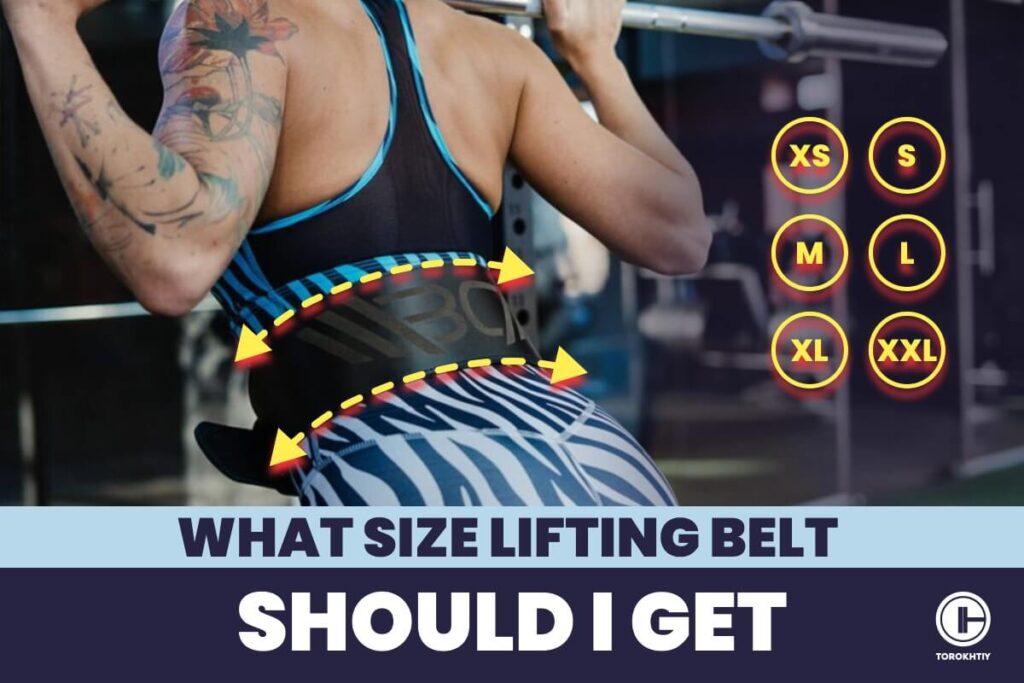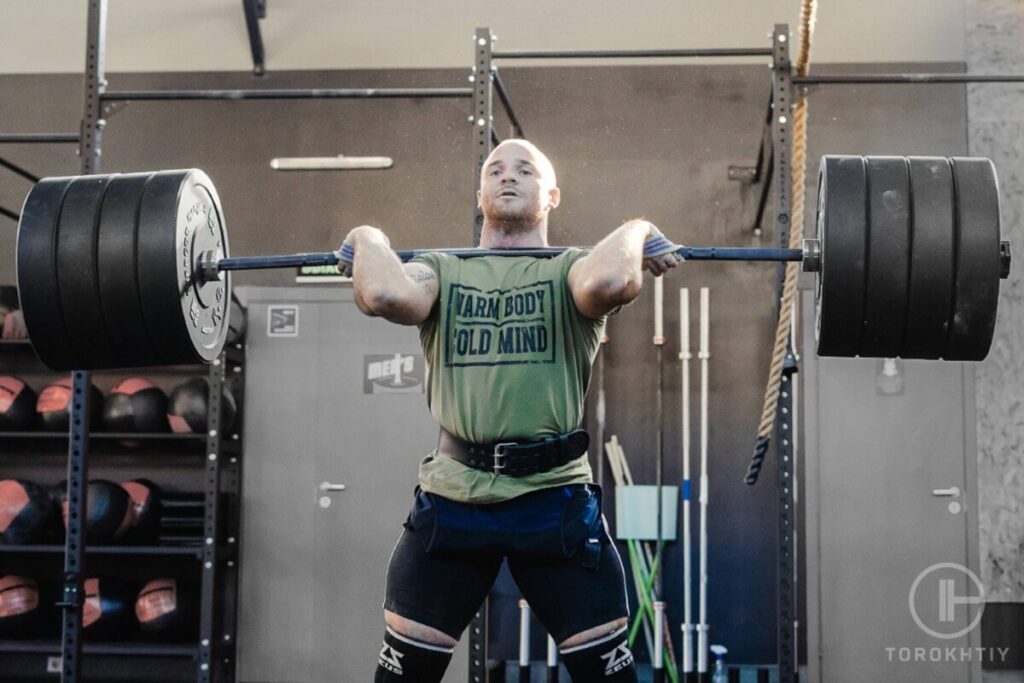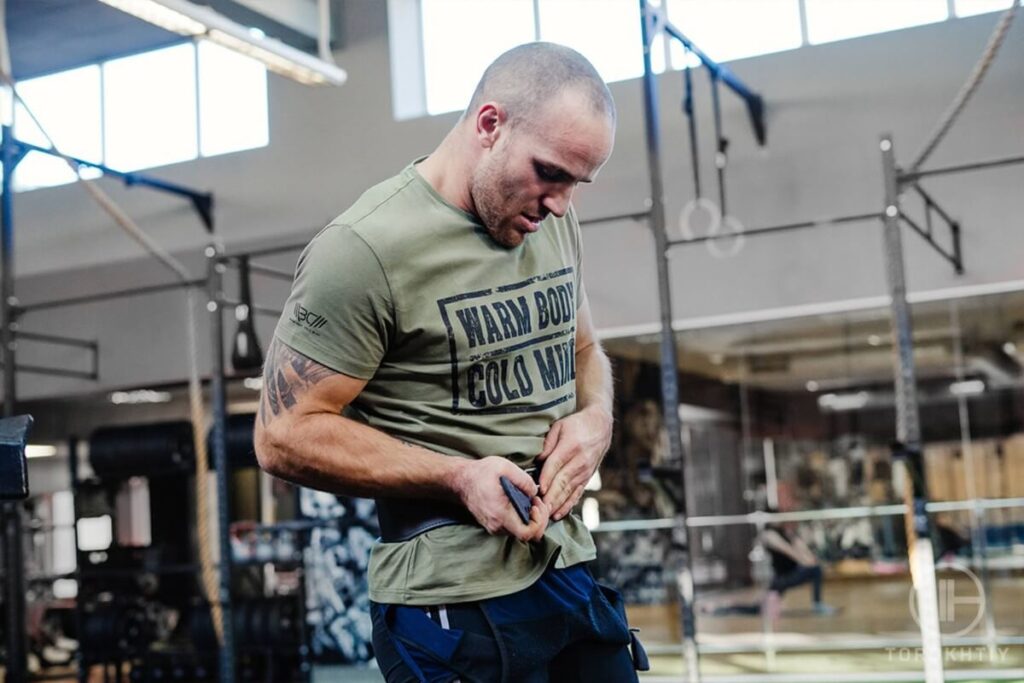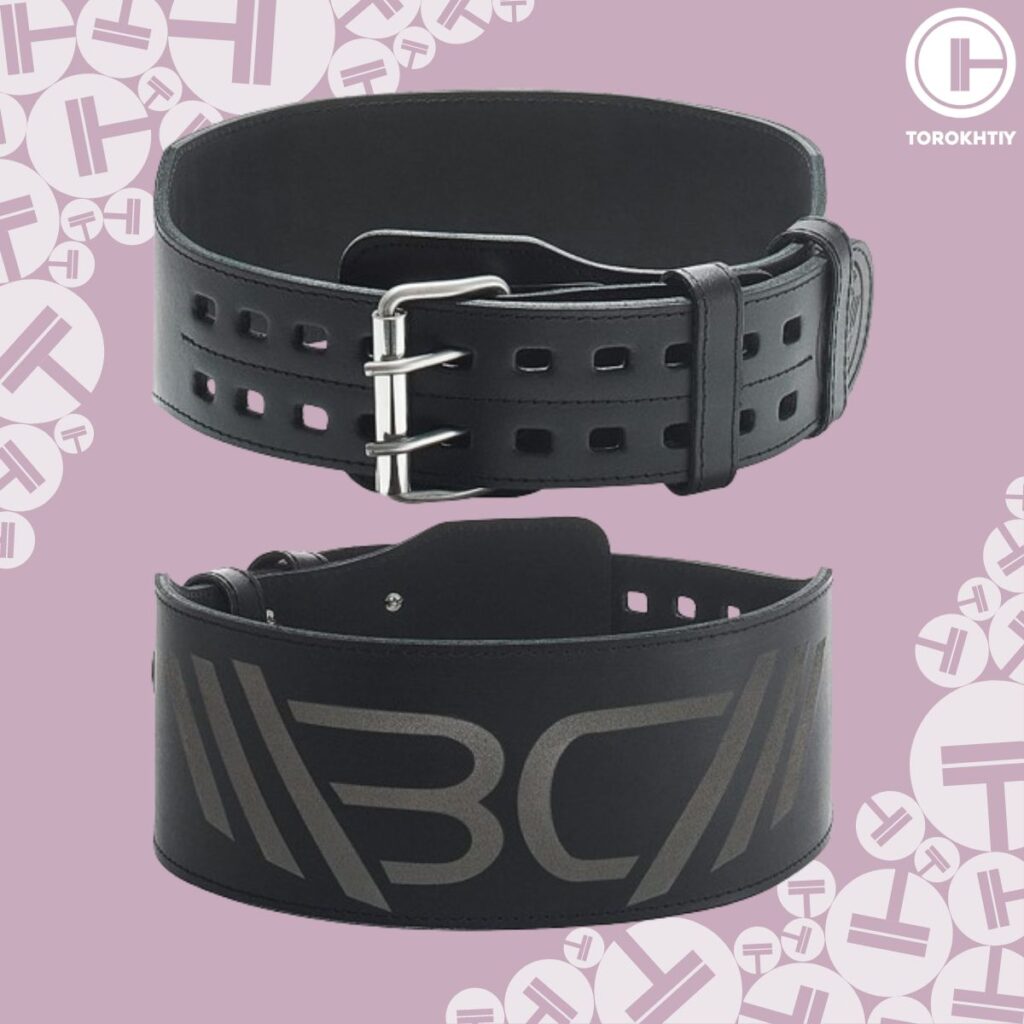What Size Lifting Belt Should I Get: Measuring Tips
Author:
Unlock your full potential by engaging with our experts and community! Have questions about your fitness journey or looking for expert advice on weightlifting techniques? Don’t hesitate — leave a comment below and Oleksiy Torokhtiy will provide a personalized answer and insights to help you reach your goals.
Torokhtiy is reader-supported. Some links are affiliate links, and we may earn a commission at no extra cost to you. See our disclosure page for details.
Choosing the right belt size can make a big difference in your performance and, more importantly, safety. But with so many options out there, how do you know which size is right for you?
It can be overwhelming, but the good news is, it’s actually rather simple. Your waist size is what determines the size, and then you have some other factors to consider, like thickness, shape, etc. If you don’t really know how to measure yourself – we have you covered because you’ll also find tips on how to correctly take your own measurements.
Let’s see how to pick a perfect belt!
A lifting belt comes in sizes from XS to XXL. Your waist size is what determines the size of the belt you should choose, and then there are some additional factors to consider, like the belt’s shape, thickness, and width.

Are All Lifting Belt Sizes The Same?
The quick answer to this is no. Belt sizes vary a lot depending on the brand and the belt. The reason for this is that individuals vary in different sizes, so the belt needs to fit the individual’s specific dimensions. That’s why if you try someone else’s belt, you may find it to be too loose or too tight.
Before you set your heart on a particular belt, keep in mind that you need to consider the thickness, shape, and width of the belt. Let’s dive deeper into each of these aspects.
1. Length
Typically, a weightlifting belt comes between twenty-two inches and fifty-six inches. Going by a standard weight lifting belt size chart:
- XS: 22-31″
- S: 27-36″
- M: 31-40″
- L: 35-44″
- XL: 39-48″
- XXL: 47-56″
These numbers can change a little depending on the company and the brand. A brand that we recommend is the Warm Body Cold Mind Leather Weightlifting Belt.
2. Width
The width of the belt is what gives the primary support to your lower back. A standard belt width is 4 inches, which works well for most lifters. However, if you’re an olympic weightlifter, shorter athlete, woman or you simply feel better with it you might prefer a belt that’s narrower – 3 inches.
A wider belt will help distribute the pressure more evenly across your back and abdomen. Narrower one will probably be more comfortable.
3. Thickness
The thickness is what determines how stiff the belt is and what level of support it offers. Common belt thicknesses range from 10mm to 13 mm.
A thicker belt (13mm) is stiffer and it offers more support, which can be ideal for heavy lifts. But keep in mind that it also may be less comfortable, especially if you’re a beginner and you’re not used to the feel of the lifting belt.
10 mm will work for most people because it’s a balance between comfort and support.
4. Shape
This factor varies. Some belts are the same width all around, so you get a more uniform support. Others are tapered, meaning they’re wider in the back and narrower at the front. Tapered belts can give you support without restricting your movement, so if you like to perform a variety of lifts, it could be a good choice.
The good way to start is that if you are a powerlifter, you may prefer a belt that has the same size across the whole length. For most of the bodybuilders and olympic weightlifters we suggest starting with a tapered version.

How to Pick the Correct Lifting Belt Sizing?
Weight is a big factor in determining your belt size. Depending on your weight, we recommend the following:
- XS and S size for 100-150 pound male.
- M for 150-180 pound male.
- L for 180-220 pound male.
- XL and XXL for 220-260 pound male.
You want a belt that fits the Goldilocks Zone, which means finding the perfect balance between the two extremes. Not too tight, but not too loose either. Somewhere in the middle is golden mean you’re trying to achieve and for that, you have to take in consideration many different factors.
It also depends on what exercises you’re planning on doing with the belt on. Each exercise has its own unique way of wearing the belt.

How to Measure for Weightlifting Belt?
Measuring for weightlifting belt can be broken down into three steps.
1. First step
Make sure when you use a measuring tape, you’re standing up and not sitting down. If you measure your waist in a seated position, it can add a few extra inches, which will offset your belt.
2. Second step
Start measuring by placing the tape around your naval as that is where the belt will ideally be tied. A quick tip would be to do this process while wearing your normal gym attire.
If you do it shirtless, then it’s a good rule of thumb to add an extra inch or two to your measuring total, as that would take into account any shirts or sweaters you might wear while lifting.
Wrap the measuring tape around your torso and back to the start point, making sure you’re relaxed the entire time. If you suck your belly in or expand it, then it will throw off the final number.
3. Third step
As you bring the measuring tape around, leave a little cushion so it’s not too tight around your waist. Remember, the proper use of a weightlifting belt is to expand your core into the belt. So, you need a little bit of space to accomplish this important goal.
When you’re at this point, use a pen to mark down the number on the measuring tape and that should give you a good indication of what weight lifting belt size chart you should use.
WBCM Leather Weightlifting Belt
FAQ
How Wide Should My Weight Lifting Belt Be?
The width of the belt will mostly determine how much support it will provide. A standard belt widths are 3 and 4 inches, which works well for most lifters. For olympic weightlifters, bodybuilding folks, shorter athletes, women we suggest belts that are narrower – 3 inches.
For Powerlifters and bigger folks – you may give a try to a 4 inches belt but keep in mind that it can be uncomfortable if it’s not the right size for you. You can also try a belt that is wide in the back and narrower in the front.
A wider belt will help distribute the pressure more evenly across your back and abdomen. Narrower one most likely will be more comfortable.
Does Lifting Belt Size Matter?
Size is an important factor. Depending on the build size, you can get more support, have more flexibility, and the belt can last longer too. But a major factor is finding the right size for you as an individual because we are all built differently. So, you really want to get a belt size suited for your needs. This will be safer in the long run as well.
How Tight Should a Weightlifting Belt Fit?
A general rule of thumb is to be able to squeeze your index finger between you and the belt. That way, you’re giving yourself enough cushion to breathe out and brace your core. If it’s too tight, then you’ll have a harder time activating your core, and you’re liable to disrupt your breathing pattern, causing you to tire out quicker and even miss your lift.
Conclusion
You can’t overestimate the importance of choosing the correct belt size, it can make or break your workout routine. Measure your waist, and then think about what kind of belt do you want in terms of thickness, shape, and width.
Remember to accurately measure yourself and if you’re a beginner, don’t expect to love it right away, especially if you get a leather belt that usually needs to be broken in. It may take some time to get used to it, but the support and stability you get from the right belt is worth the potentially awkward start.
Also read:
- Best Weightlifting Belt
- When to Start Using a Lifting Belt
- Nylon vs Leather Lifting Belt
- 10mm vs 13mm Belt
- Lever Belt vs Prong Belt
- Powerlifting Belt vs Weightlifting Belt
- Best Weight Lifting Belt for Women
- Best Powerlifting Lever Belt
- Best Deadlift Belt
References:
- The Ultimate Weightlifting Belt Guide
https://www.bodybuilding.com/content/the-ultimate-weightlifting-belt-guide.html. - Lessons in Weight Belts: How and Why to Use Them
https://www.bodybuilding.com/content/lessons-in-weight-belts-how-and-why-to-use-them.html. - All photos are made by Torokhtiy Media team.
Why Trust Us?
With over 20 years in Olympic weightlifting, strength training, nutrition coaching, and general fitness our team does its best to provide the audience with ultimate support and meet the needs and requirements of advanced athletes and professional lifters, as well as people who strive to open new opportunities and develop their physical capabilities with us.
By trusting the recommendations of our certified experts in coaching, nutrition, and sports training programming, as well as scientific consultants, and physiotherapists, we provide you with thorough, well-considered, and scientifically proven content. All the information given in the articles concerning workout programming, separate exercises, and athletic performance, in general, is based on verified data.
The product testing process is described in more detail here.
Author: Oleksiy Torokhtiy
Olympic Weightlifting Champion
Best Results: Snatch – 200 kg,
C&J – 240 kg
Oleksiy Torokhtiy is a professional athlete boasting 20 years of experience in Olympic weightlifting. With multiple European and World titles under his belt, he has showcased his prowess in two Olympic Games (Beijing 2008 and London 2012). Upon concluding his illustrious career, Oleksiy dedicated himself to coaching. By 2022, he had conducted over 200 weightlifting seminars worldwide. He is the visionary behind an international sportswear and accessories brand known for its motto, “Warm Body Cold Mind.” Additionally, he is an esteemed author and the creator of a series of training programs and eBooks.




Still have questions after reading our article? Unlock your full potential by engaging with our experts and community! Don’t hesitate — leave a comment below and Oleksiy Torokhtiy will provide a personalized answer and insights to help you reach your goals.